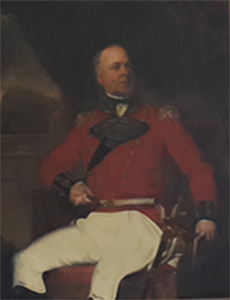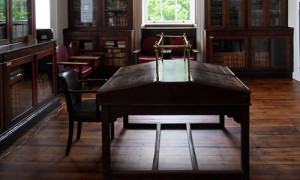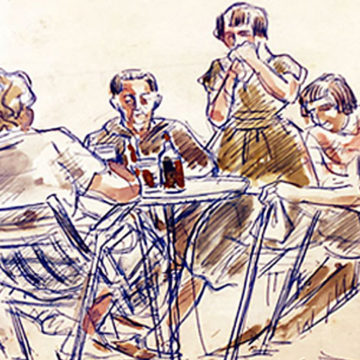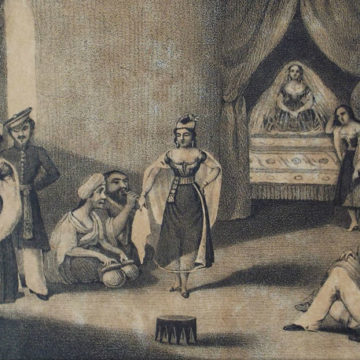
The Gibraltar Garrison Library was founded in 1793 by Captain (afterwards Colonel) Drinkwater, the historian of the Great Siege of Gibraltar, 1779-1783. Drinkwater had, during the Siege, ‘lamented the want of a public library in Gibraltar’, especially under siege conditions when little by way of newspapers and reading material reached Gibraltar. It took 10 years however before the first reading rooms were opened for the officers of the Garrison. These were based at premises opposite The Convent, the Governor’s residence, with an initial catalogue of around 460 volumes. Books continued to be purchased for the library and by 1799 is was decided that larger premises were needed to house the fast growing holdings of the library.
Work on the current building commenced in 1800 under the auspices of General Charles O’Hara, Governor of Gibraltar. These were completed in 1804 under the governorship of the Duke of Kent, Queen Victoria’s father. The Librarian at that time was Captain Fyers (afterwards Major-General) of the Royal Engineers, but his role in the Library’s evolution went much further in that he was the architect and the driving force behind the Garrison Library building as we see it today.

Captain Fyers was in fact one of the original members of the Library committee and a co-signatory of the 1799 circular to officers regarding the plans to expand the Library.
At its present location at 2, Library Ramp, the Library flourished as a meeting place for the officers of the Garrison. This early history gives us a clear indication of purpose of the library as a place for training and recreation. As an outpost (albeit a European one) of Empire, Gibraltar served as a first posting for many young officers who would, during their stay, continue in their military training before being sent further afield. A library therefore, was essential for young officers in training, and this is reflected in the collections which cover a number of areas such as the military sciences, travel narratives, of Mediterranean countries and cultures and of histories of countries such as India and Africa. The Gibraltar Garrison Library collections certainly reflect the era of colonial expansion and we are dealing with, in many respects, a collection build around notions of Empire.
The Gibraltar Garrison Library remained as a military library up until September 2011, at which point the Library was handed-over to the Government of Gibraltar. This historic move has ensured the continuity of the Library and the preservation of its collections. The Library is open daily and functions as a reference library and a research centre, providing open access to the collections and archives that form part of the catalogue. This new chapter has also brought the Library well and truly into the twenty-first century.


